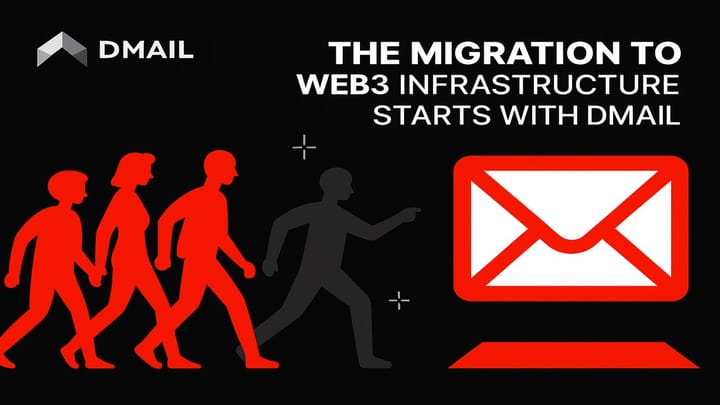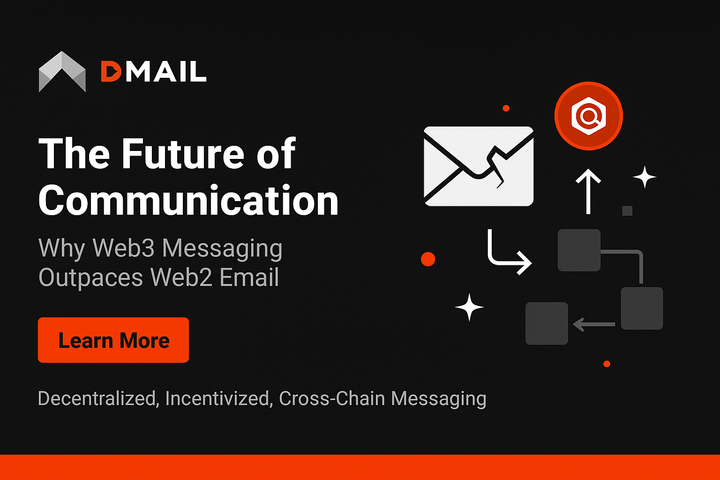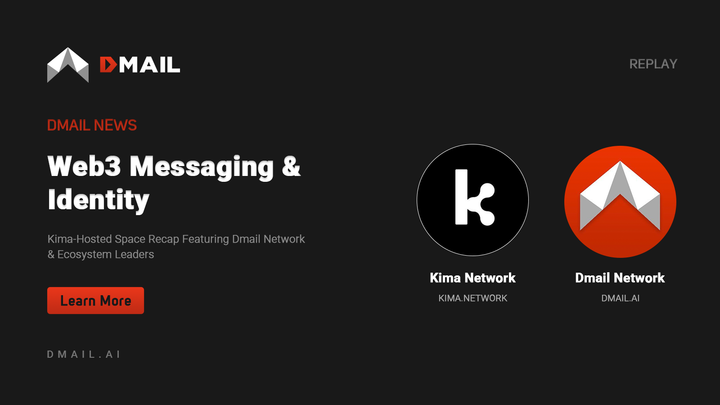BTCFi Summer Breakthrough: Dmail Joins the Solv Protocol AMA
DMAIL recently joined our partner, Solv Protocol for an AMA to discuss the future of BTCFi

Dmail was deighted to particpate in an AMA with @lista_dao, @Dmailofficial, and @zklink_Official and we delved deep into BTCFi’s breakthrough this summer.
Speakers in attendance:
1. @RyanChow_DeFi, Founder @SolvProtocol
2. Kay, Marketing Manager @lista_dao
3. Daniel James, COO @Dmailofficial
4. @neilliew PR Lead @zkLink_Official
July 4, 2024, 4:00 PM UTC+8
https://twitter.com/i/spaces/1LyxBnWrAooxN…
Hello everyone, I’m Daniel James, the COO of Dmail Network. At Dmail, we’re all about transforming the way we communicate in the Web3 world. Our team is made up of blockchain experts, cryptography specialists, and developers who are all dedicated to providing secure and efficient communication solutions. We’re at the forefront of the Web3 communications sector, offering encrypted emails, unified notifications, and targeted marketing across multiple blockchain networks and dApps.
We’ve recently partnered with SolvBTC, integrating their liquid yield token for Bitcoin into our earnings platform. This partnership allows SolvBTC to leverage our user base and secure communication infrastructure, enhancing community engagement and driving adoption. This collaboration highlights our commitment to supporting innovative projects that push the boundaries of blockchain technology.
BTCFi as the Next Hot Topic
Now, let’s talk about BTCFi. BTCFi, or Bitcoin Finance, is shaping up to be the next big thing following the success of Ordinals and Runes. We’re seeing a growing interest in Bitcoin's capabilities beyond simple transactions, such as DeFi and smart contracts. Projects like Runic Chain are leveraging Bitcoin’s security while adding new functionalities via Layer 2 solutions, attracting significant attention and driving innovation in the space.
Bitcoin’s foundational technology offers unmatched security and trust, making it an ideal candidate for expanded financial services. BTCFi can utilize this security to provide decentralized financial products, offering a robust alternative to Ethereum-based DeFi solutions.
Key Technologies and Infrastructures for BTCFi Development
Developing BTCFi relies on several key technologies and infrastructures:
- Layer 2 Solutions: These enhance Bitcoin’s scalability and transaction efficiency, allowing for faster and more cost-effective operations. Runic Chain, for example, is addressing Bitcoin’s scalability issues and enabling more complex financial transactions.
- Smart Contract Integration: Implementing smart contracts on Bitcoin can unlock a range of DeFi applications, facilitating automated and secure financial transactions. The Runes Protocol is a prime example of providing the necessary framework for these smart contracts.
- Decentralized Identifiers (DIDs): These are crucial for secure and private user authentication and interaction, maintaining user privacy while interacting with decentralized applications.
- Interoperability Protocols: Ensuring seamless interaction between Bitcoin and other blockchain networks fosters a collaborative ecosystem. Cross-chain protocols and bridges enable BTCFi to interact with other blockchains, expanding its functionality and user base.
Executable Solutions for Fund Security from BTC Holders' Perspective
Ensuring fund security for BTC holders is a top priority. Here are some executable solutions:
- Multi-Signature Wallets: These provide enhanced security by requiring multiple approvals for transactions, which is essential for securing large funds and preventing unauthorized access.
- Hardware Wallets: Offering offline storage solutions to protect funds from online threats, hardware wallets are widely regarded as one of the most secure methods for storing cryptocurrencies.
- Smart Contract Audits: Regular audits by reputable firms ensure the reliability and security of smart contracts, identifying and fixing vulnerabilities.
- Decentralized Custody Solutions: Utilizing decentralized mechanisms for asset custody minimizes single points of failure and enhances security, spreading the risk and reducing the likelihood of a single point of failure compromising the security of funds.
Comparing the ETH and BTC Ecosystems
The comparison between the ETH and BTC ecosystems is a complex one. Ethereum’s ecosystem is known for its strong support for decentralized applications (dApps), DeFi projects, and NFTs, thanks to its robust smart contract capabilities. It has a vast developer community and continuous innovation, making it a powerhouse in the blockchain space.
Bitcoin’s ecosystem, traditionally focused on being a store of value and a medium of exchange, is evolving with Layer 2 solutions and DeFi integrations. Projects like SolvBTC demonstrate how Bitcoin can benefit from its established reputation, security, and widespread adoption as a digital gold standard.
Instead of seeing ETH and BTC as competitors, it’s more productive to view them as collaborators in the broader blockchain space. Each ecosystem has unique strengths: Ethereum excels in smart contracts and dApps, while Bitcoin offers unparalleled security and stability. Their continued development can complement each other and drive the overall growth of blockchain technology.

Connect with Dmail: Website | Twitter | Discord | Github | Telegram





Comments ()